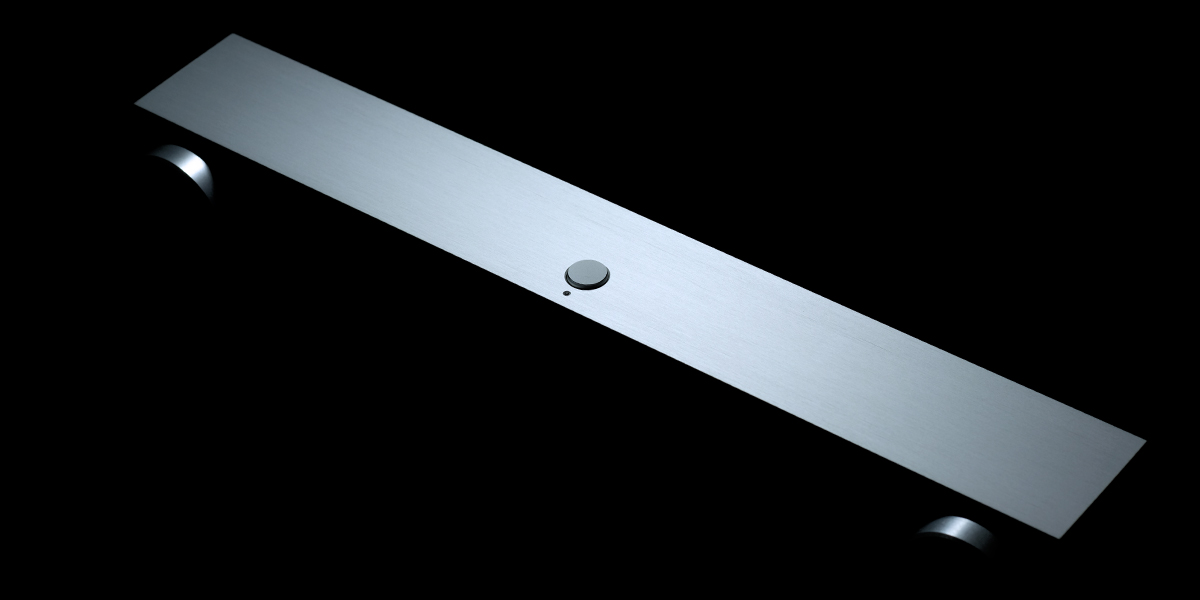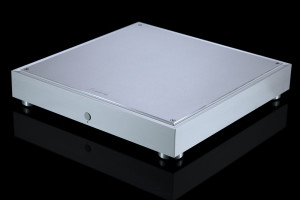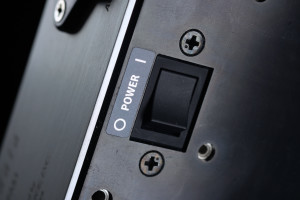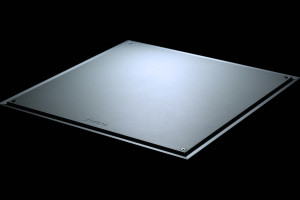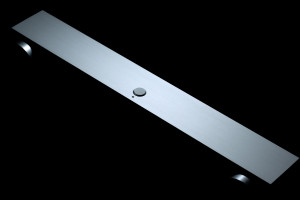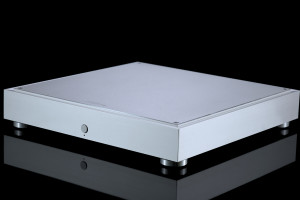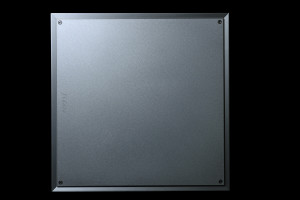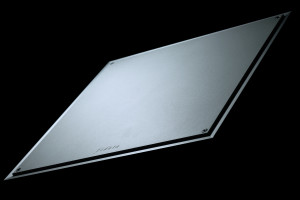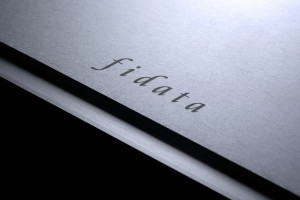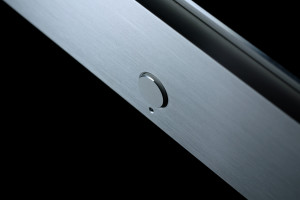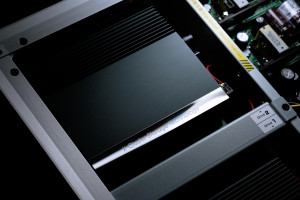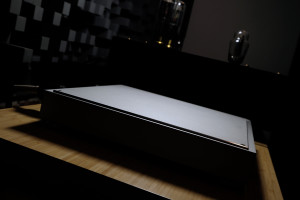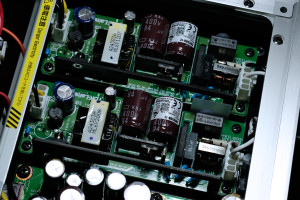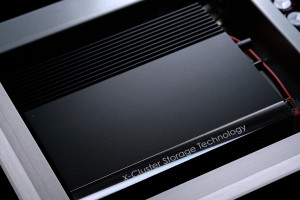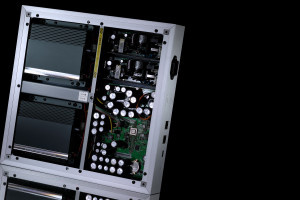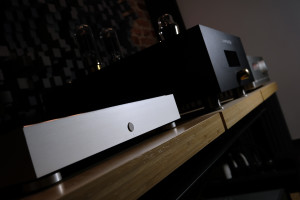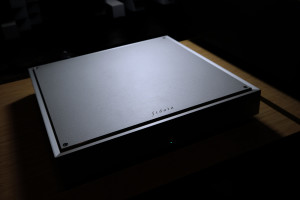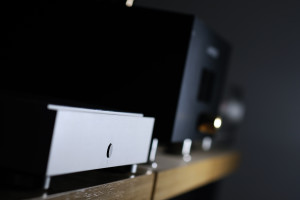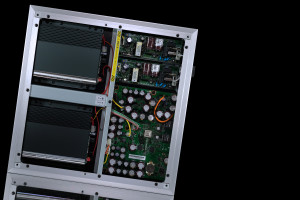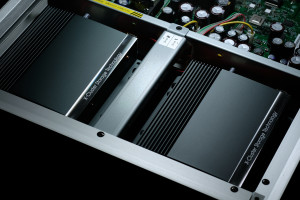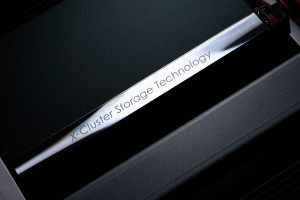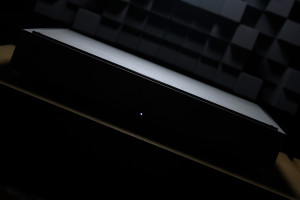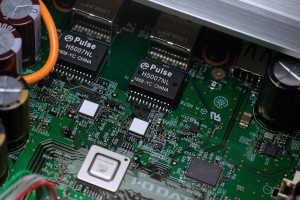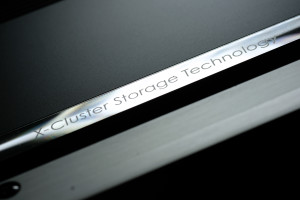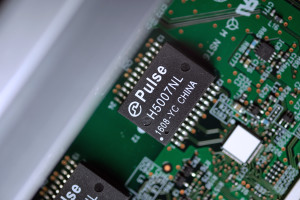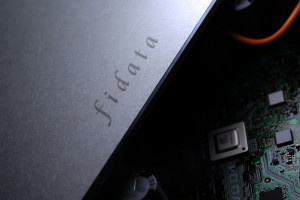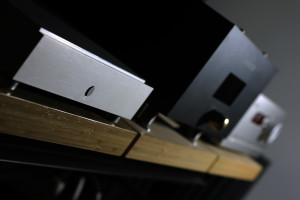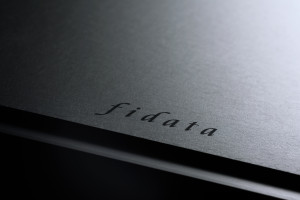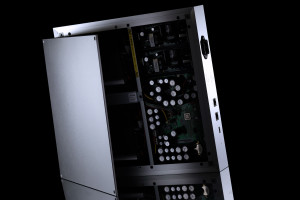Japanese Fidata HFAS1-S10U server/streamer turned out to be the very best machine of the sort among those known to me. One year passed, several reasons valid enough to take a closer look at its fancier version came to be and that’s how Fidata HFAS1-XS20U became this review’s main dish. Enjoy!
Introduction
This story wasn’t planned. It’s actually safe to say that Fidata’s flagship pushed itself into the line before several other assignments. If it wasn’t for the fact that its a bit more affordable kin left me utterly impressed, probably I wouldn’t care. Yet it did and this changed everything. Fidata HFAS1-S10U proved me very bluntly how much of a weak link my laptop was. This Japanese performer is anything but afforable, on the contrary. But its build quality, intuitive and stressfree operation, functionality and amazing sound quality reflect its ask quite well. It’s a luxury item and nothing less, the best one of its kind I’m familiar with and that’s why it left my place with our Victor award. Since establishing this very portal (two years passed in March 2018), only three products out of 100+ reviewed by yours truly achieved this mark. It’s given to the very best of the best items, on this count the second place holder leaves with nothing. The Victor award also expresses my admiration to a given company’s work in general, thus is not only about a product only but also people involved. And having said this, the Fidata team scored a perfect debut, with no mistakes along the road. That’s why once an opportunity to review their HFAS1-XS20U model struck, I was in. Not only as a journalist, but also as an enthusiast.
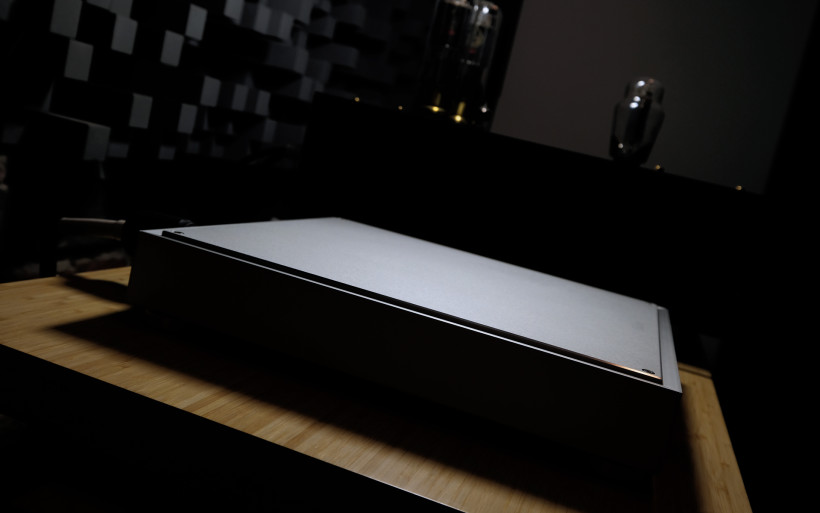 When Fidata HFAS1-S10U arrived, a different DAC this reporter used at that time. The current reference – LampizatOr Pacific – bested the back then Golden Gate top source on counts such as transparency, vividness, agility, clarity, openness, downstairs impact and reach. The Pacific model finally became my daily driver several months ago because its voicing turned out to be very much useful in my daily reporter’s struggle. But most importantly, this D/A converter rather quickly proved me that Fidata HFAS1-XS20U is somewhat different performer in comparison to its sibling, which served as the incentive strong enough for me to write this story. It got better, though. The recently delivered Kinki Audio EX-M1 fueled this fire even more efficiently. The Chinese integrated amp got along with my Boenicke W8 floorstanders amazingly well, I’ve heard them this good only once in the past and I strongly think that Sven himself would agree with me on this. To conclude, the hardware status quo at my place changed significantly over the year, memories of SOtM’s sMS-200ultra were still very much alive, all factors listed above forced me to not delay the Fidata case but act instead, which eventually morphed into this material in the process.
When Fidata HFAS1-S10U arrived, a different DAC this reporter used at that time. The current reference – LampizatOr Pacific – bested the back then Golden Gate top source on counts such as transparency, vividness, agility, clarity, openness, downstairs impact and reach. The Pacific model finally became my daily driver several months ago because its voicing turned out to be very much useful in my daily reporter’s struggle. But most importantly, this D/A converter rather quickly proved me that Fidata HFAS1-XS20U is somewhat different performer in comparison to its sibling, which served as the incentive strong enough for me to write this story. It got better, though. The recently delivered Kinki Audio EX-M1 fueled this fire even more efficiently. The Chinese integrated amp got along with my Boenicke W8 floorstanders amazingly well, I’ve heard them this good only once in the past and I strongly think that Sven himself would agree with me on this. To conclude, the hardware status quo at my place changed significantly over the year, memories of SOtM’s sMS-200ultra were still very much alive, all factors listed above forced me to not delay the Fidata case but act instead, which eventually morphed into this material in the process.
Build
Prior to digging deeper into this writing, to get familiar with the Fidata HFAS1-S10U review is my strong suggestion as its upper tier sibling is exactly the same on many counts. Just to make this chapter properly orderly I’ll say that the Japanese team executed their files based Fidata platform very thoroughly. Not only it streams music to a DAC directly, but is also a storage for it, thus there’s no need to use a NAS and the only necessary ingredients to make either of the HFAS1 hardware going are a tablet/smartphone as a handy RC and a router. That’s it. The interesting bit is that both Japanese machines can be used as an audiophile network storage instead of a NAS and then connected to a standalone streamer by any other company. This functionality should make enthusiasts of highest caliber perfectly happy. You know, those uncompromising individuals who are displeased with a storage of very much PC origin and willing to speand as much as upper four figures for something posher and of audio related background. Whether such an action will improve anything I can’t say. Not having a separate streamer nearby, I’m simply not equipped properly to investigate this matter any deeper.
 What I do know though is that the Fidata team is a textbook case of fanatics very much into small things most manufacturers ommit. The Japanese mentality is uncompromising after all and Fidata HFAS1-S10U proved me that its makers take no prisoners. Since their machine was designed to work as a streamer and a storage at the same time, my sincere intention was to exploit it like so, though this time around via Fidata’s proprietary control app instead of Linn’s or Lumin’s software. It satisfied my fairly limited needs with no hiccups along the road. There were no issues with early configuration, the whole procedure was straghtforward, quick and pleasant. Via my iPhone 7 I could change the machine’s LED colour, bypass digital volume control, truncate both RJ-45’s bandwidth or turn off their sockets’ green diodes. After connecting an external storage, it took me seconds to figure out how to copy its content to the machine’s internal memory.
What I do know though is that the Fidata team is a textbook case of fanatics very much into small things most manufacturers ommit. The Japanese mentality is uncompromising after all and Fidata HFAS1-S10U proved me that its makers take no prisoners. Since their machine was designed to work as a streamer and a storage at the same time, my sincere intention was to exploit it like so, though this time around via Fidata’s proprietary control app instead of Linn’s or Lumin’s software. It satisfied my fairly limited needs with no hiccups along the road. There were no issues with early configuration, the whole procedure was straghtforward, quick and pleasant. Via my iPhone 7 I could change the machine’s LED colour, bypass digital volume control, truncate both RJ-45’s bandwidth or turn off their sockets’ green diodes. After connecting an external storage, it took me seconds to figure out how to copy its content to the machine’s internal memory.
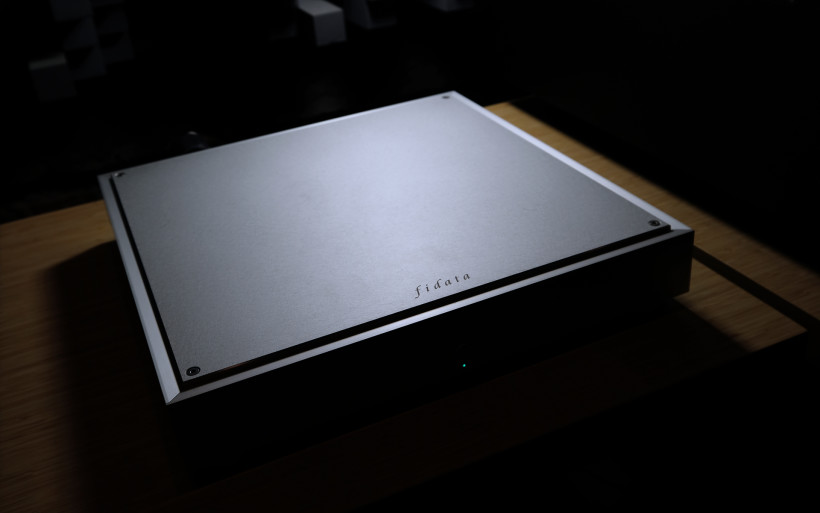 All digital music on-board was available via file structure and type, artist, music genre, alphabetically or by year and my own playlist creation was a breeze. All options listed were used with no issues and the product itself not even once needed a hard reset throughout three weeks long usage time. There was no reason to complain and it became quite obvious that the Fidata HFAS1-XS20U was polished both tech and UI wise. Though let me stress again that my own streaming related needs are limited, minimal even.
All digital music on-board was available via file structure and type, artist, music genre, alphabetically or by year and my own playlist creation was a breeze. All options listed were used with no issues and the product itself not even once needed a hard reset throughout three weeks long usage time. There was no reason to complain and it became quite obvious that the Fidata HFAS1-XS20U was polished both tech and UI wise. Though let me stress again that my own streaming related needs are limited, minimal even.
 Fidata HFAS1-XS20U looks and feels very much alike its kin. This minimalist box is made very well and posh. Its brushed aluminium enclosure contrasts really well with paper alike textured top cover. One round on/off button with a LED (either light green or deep blue) sits on the product’s front, whereas four aluminium feet with rubber washers and the main on/off switch are to be found on its underbelly. The IEC socket on the machine’s rear neighbours with two RJ-45 sockets, which allows one to connect the product to a router and to pass a signal outside to i.e. a separate streamer. One multi-purposed USB type A socket located nearby allows a user to send data to a DAC’s USB input or connect a drive loaded with content, which I gladly exploited. It’s one or the other though and I’d very much like to use both options at the same time. That’s my only complain and a rather minior one at that considering the machine’s purpose. One deeply placed reset button closes the list.
Fidata HFAS1-XS20U looks and feels very much alike its kin. This minimalist box is made very well and posh. Its brushed aluminium enclosure contrasts really well with paper alike textured top cover. One round on/off button with a LED (either light green or deep blue) sits on the product’s front, whereas four aluminium feet with rubber washers and the main on/off switch are to be found on its underbelly. The IEC socket on the machine’s rear neighbours with two RJ-45 sockets, which allows one to connect the product to a router and to pass a signal outside to i.e. a separate streamer. One multi-purposed USB type A socket located nearby allows a user to send data to a DAC’s USB input or connect a drive loaded with content, which I gladly exploited. It’s one or the other though and I’d very much like to use both options at the same time. That’s my only complain and a rather minior one at that considering the machine’s purpose. One deeply placed reset button closes the list.
 The difference between HFAS1-S10U and HFAS1-XS20U is visible once their roofs are off. The latter is loaded with perhaps not groundbreaking differences yet noticeable nonetheless. Both machines sport the very same heart, the main PCB is didn’t change, though several tuning measures were conducted here and there. The number of Samsung 850 Evo SSDs got doubled from two to four storage units, thus the total space increased from 1TB to twice that in the process. Each pair of these drives is a part of a grander scheme known as Fidata’s proprietary X-Cluster Storage developed with HFAS1-XS20U on mind.
The difference between HFAS1-S10U and HFAS1-XS20U is visible once their roofs are off. The latter is loaded with perhaps not groundbreaking differences yet noticeable nonetheless. Both machines sport the very same heart, the main PCB is didn’t change, though several tuning measures were conducted here and there. The number of Samsung 850 Evo SSDs got doubled from two to four storage units, thus the total space increased from 1TB to twice that in the process. Each pair of these drives is a part of a grander scheme known as Fidata’s proprietary X-Cluster Storage developed with HFAS1-XS20U on mind.
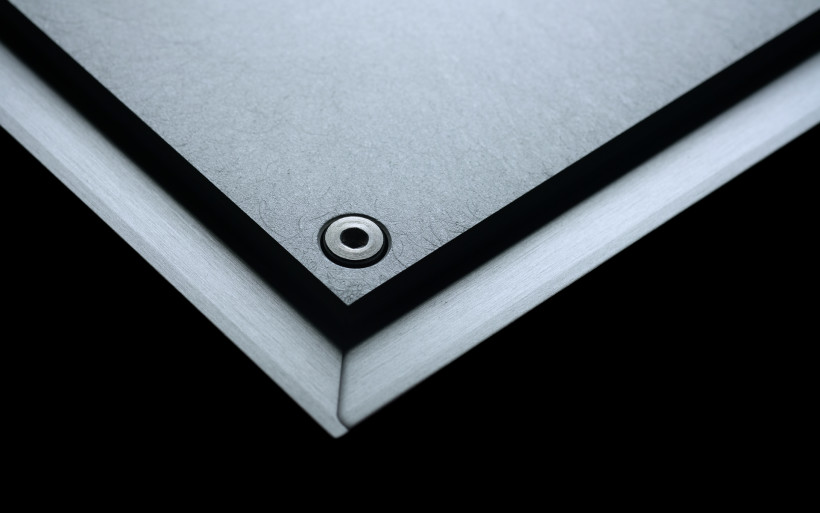 According to Fidata, uneven data access is supposed to cause power fluctuations unfavorable to the sound quality. Drives on the job in a cluster make it even, which translates to smoother power supply load, more stability, less noise and limited energy consumption. All SSDs were placed inside fancy aluminium enclosures. Hid from prying eyes, these are completely unimportant from user’s perspective. The interesting bit is that these boxes protect drives from EMI/RFI and separate them from their power conditioners. Also, the main plate with all electronics just a bit above got 0.9mm beefier to be 3mm thick in total and that’s the main reason why the product’s mass increased from 6 to 7.3kg. Power consumption also jumped from 25 to 32W. Now one obvious question is in order: do all these fairly small reworks translate to sound quality at all?
According to Fidata, uneven data access is supposed to cause power fluctuations unfavorable to the sound quality. Drives on the job in a cluster make it even, which translates to smoother power supply load, more stability, less noise and limited energy consumption. All SSDs were placed inside fancy aluminium enclosures. Hid from prying eyes, these are completely unimportant from user’s perspective. The interesting bit is that these boxes protect drives from EMI/RFI and separate them from their power conditioners. Also, the main plate with all electronics just a bit above got 0.9mm beefier to be 3mm thick in total and that’s the main reason why the product’s mass increased from 6 to 7.3kg. Power consumption also jumped from 25 to 32W. Now one obvious question is in order: do all these fairly small reworks translate to sound quality at all?
Sound
Fidata HFAS1-XS20U served as a storage and a streamer at the same time, just as the doctor ordered. It pushed data to my LampizatOr Pacific’s (KR Audio T-100 + KR Audio 5U4G Ltd. Ed. z 2016 roku) USB in, then to either of the two integrated amps (Kinki Audio EX-M1 or Trilogy 925), which fed my reference Boenicke W8 floorstanders. My iPhone 7 handled the RC duty via Fidata’s own app. Any tablet would’ve done a far better job yet none I had on hand. And lastly, just as one year ago, Fidata HFAS1-XS0U skirmished with my trusty laptop.
 Let’s dive into the past for a while. Fidata HFAS1-S10U put the music on the pedestal and focused my attention at its utmost beautiful aspect. This quite enigmatic and artsy description of course can be translated to a proper audiophile lingo, but it describes the most important bit perfectly as is. The Japanese deck’s input one year ago was as clear as it was unequivocal. Along with my back then reference setup, the sound was phenomenally textured and slightly warm, tissue on instruments was unusually moist, wet even, vivid and I liked it a lot. Such tuning’s after-effect was a given product’s strong character of its own and on this count the HFAS1-S10U was very audible at my place, literally omnipresent. Not even one stone it left unturned and unimproved. Put shortly, it pretty much crapped on my laptop. Come to think of it, for the money it really should.
Let’s dive into the past for a while. Fidata HFAS1-S10U put the music on the pedestal and focused my attention at its utmost beautiful aspect. This quite enigmatic and artsy description of course can be translated to a proper audiophile lingo, but it describes the most important bit perfectly as is. The Japanese deck’s input one year ago was as clear as it was unequivocal. Along with my back then reference setup, the sound was phenomenally textured and slightly warm, tissue on instruments was unusually moist, wet even, vivid and I liked it a lot. Such tuning’s after-effect was a given product’s strong character of its own and on this count the HFAS1-S10U was very audible at my place, literally omnipresent. Not even one stone it left unturned and unimproved. Put shortly, it pretty much crapped on my laptop. Come to think of it, for the money it really should.
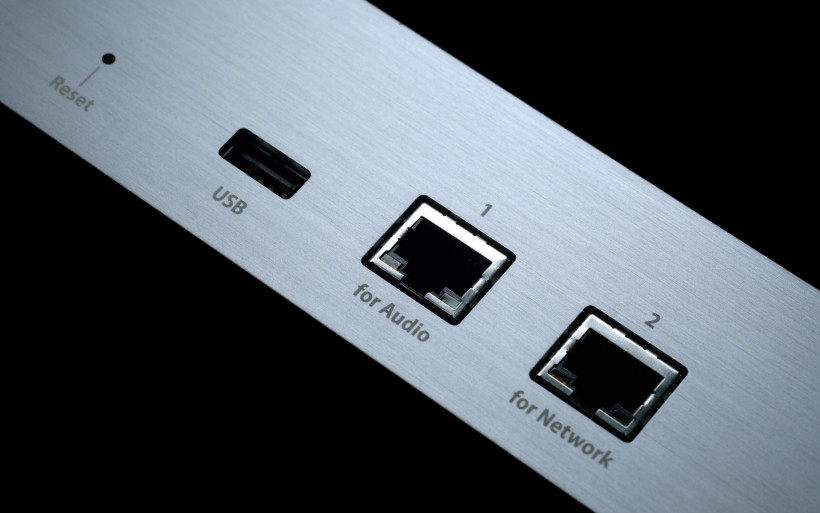 The Japanese machine sported limitless smoothness and amazingly sorted, perfectly black and grain-free background, just as every posh streamer should. This concoction of virtues also led to the HFAS1-S10U’s informative character showcased in completely effortless and easygoing way, though served along the road and outside of the scope of this deck’s key features. This was actually quite surprising. Informational tissue usually locates somewhere on the very last place in case of products of warm character. The Japanese machine surely was one and yet it pulled the detailing stunt with no ifs and buts and there was no doubt about it. Or maybe it merely showcased the truth? Maybe well-recorded music is in large part naturally sweet, pleasantly moist and organic indeed? And insight into it happens naturally, thus isn’t enforced at all? I have no answers to these questions. Yet if I had a gun put up against my forehead and had to describe accurately Fidata HFAS1-S10U with just two words and not more, ‘organic’ and ‘analogue’ would’ve been my picks. Who knows, maybe I’d left the room alive and well shortly after.
The Japanese machine sported limitless smoothness and amazingly sorted, perfectly black and grain-free background, just as every posh streamer should. This concoction of virtues also led to the HFAS1-S10U’s informative character showcased in completely effortless and easygoing way, though served along the road and outside of the scope of this deck’s key features. This was actually quite surprising. Informational tissue usually locates somewhere on the very last place in case of products of warm character. The Japanese machine surely was one and yet it pulled the detailing stunt with no ifs and buts and there was no doubt about it. Or maybe it merely showcased the truth? Maybe well-recorded music is in large part naturally sweet, pleasantly moist and organic indeed? And insight into it happens naturally, thus isn’t enforced at all? I have no answers to these questions. Yet if I had a gun put up against my forehead and had to describe accurately Fidata HFAS1-S10U with just two words and not more, ‘organic’ and ‘analogue’ would’ve been my picks. Who knows, maybe I’d left the room alive and well shortly after.
 The longer the Fidata deck was at work at my place, the more it became obvious how good it was. This machine’s voicing very tastefully executed, exquisite and enormously enjoyable was the final conclusion. Not only this, the initial ‘wow’ effect didn’t fade away after several days or a week but was constantly present during the ride, which indicated clearly that a remarkably sounding product landed under my roof. Not many audio machines yours trully misses. Though as an enthusiast he still thinks about HFAS1-S10U and those are rather wet thoughts, even though it’s been a year already.
The longer the Fidata deck was at work at my place, the more it became obvious how good it was. This machine’s voicing very tastefully executed, exquisite and enormously enjoyable was the final conclusion. Not only this, the initial ‘wow’ effect didn’t fade away after several days or a week but was constantly present during the ride, which indicated clearly that a remarkably sounding product landed under my roof. Not many audio machines yours trully misses. Though as an enthusiast he still thinks about HFAS1-S10U and those are rather wet thoughts, even though it’s been a year already.
 Lack of any boredom signs with the HFAS1-S10U model in my system was very obvious. The sound this good simply doesn’t morph into something common in time, it always delivers. In any case, this product didn’t turn my reference rig’s sound into something very different but showcased what it was capable of instead and topped the effect via additional vividness injection. The return to gray daily routine, namely my utmost ordinary laptop, was nothing short but quite painful, though one very valuable upshot followed. This experience allowed me to fully grasp how much potential my reference hardware still had and that’s something I’ll eventually address. It’s worth the effort, that’s one thing and me now being aware and very much in the streaming know is the other.
Lack of any boredom signs with the HFAS1-S10U model in my system was very obvious. The sound this good simply doesn’t morph into something common in time, it always delivers. In any case, this product didn’t turn my reference rig’s sound into something very different but showcased what it was capable of instead and topped the effect via additional vividness injection. The return to gray daily routine, namely my utmost ordinary laptop, was nothing short but quite painful, though one very valuable upshot followed. This experience allowed me to fully grasp how much potential my reference hardware still had and that’s something I’ll eventually address. It’s worth the effort, that’s one thing and me now being aware and very much in the streaming know is the other.
 Once I was told that HFAS1-XS20U was sent my way, I was perfectly calm and confident that this higher tier machine can’t be any worse. The Japanese team already proved the point. This review’s star’s predecessor turned out to be an uncompromising and polished performer. Purposely I got back to its sound above, simply because the fond memory of it is still pleasantly vivid. Past the upper echelon deck’s arrival it turned out very quickly that it sported many similarities with its more affordable kin. In fact the two units were very much alike on most counts. That’s a good sign for individuals already familiar with HFAS1-S10U, yet hesitant to pull the trigger because of question marks around its pricier sibling. Still, it quickly became obvious that HFAS1-XS20U was also different.
Once I was told that HFAS1-XS20U was sent my way, I was perfectly calm and confident that this higher tier machine can’t be any worse. The Japanese team already proved the point. This review’s star’s predecessor turned out to be an uncompromising and polished performer. Purposely I got back to its sound above, simply because the fond memory of it is still pleasantly vivid. Past the upper echelon deck’s arrival it turned out very quickly that it sported many similarities with its more affordable kin. In fact the two units were very much alike on most counts. That’s a good sign for individuals already familiar with HFAS1-S10U, yet hesitant to pull the trigger because of question marks around its pricier sibling. Still, it quickly became obvious that HFAS1-XS20U was also different.
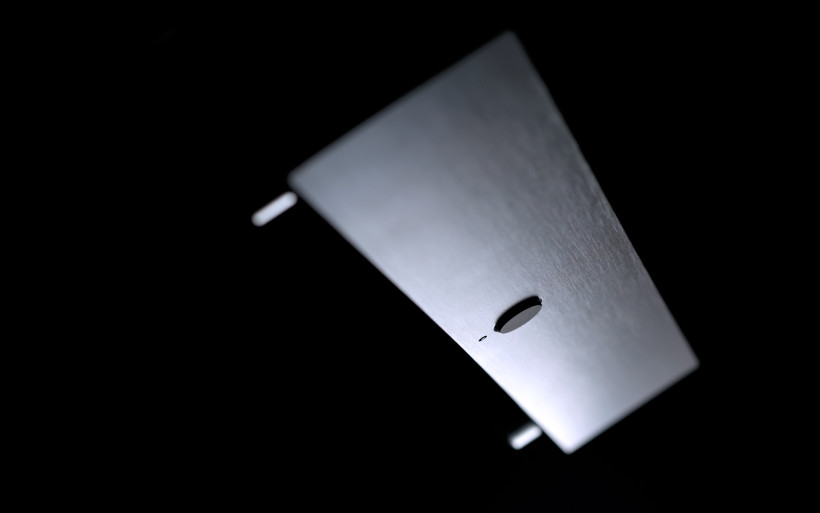 Fidata’s upper echelon machine performed as pleasantly, thus organically, lively and smooth as its predecessor and there was not a shred of doubt about this in my mind. This sound was completely free from grain or any metallic coating. Even poor recordings I purposely ommit on a daily basis were back on the menu and presented far better in comparison to my laptop. That was something I looked forward to and that’s what I got in return, subjectively speaking there was no reason to be anything less than perfectly happy. But the HFAS1-XS20U also performed more openly that HFAS1-S10U, the former’s mass-to-openess ratio was different. The outcome was as pleasantly gutsy as I remembered, but also served through a bigger and more widely opened window. The space generated was additionally boosted on the sides and a bit less condensed than one year ago, though the product’s romantic and pretty character remained as sensible and present. On these counts no voicing alterations happened, but rather the already very good imaging and on-stage presence additionally boosted got simply better.
Fidata’s upper echelon machine performed as pleasantly, thus organically, lively and smooth as its predecessor and there was not a shred of doubt about this in my mind. This sound was completely free from grain or any metallic coating. Even poor recordings I purposely ommit on a daily basis were back on the menu and presented far better in comparison to my laptop. That was something I looked forward to and that’s what I got in return, subjectively speaking there was no reason to be anything less than perfectly happy. But the HFAS1-XS20U also performed more openly that HFAS1-S10U, the former’s mass-to-openess ratio was different. The outcome was as pleasantly gutsy as I remembered, but also served through a bigger and more widely opened window. The space generated was additionally boosted on the sides and a bit less condensed than one year ago, though the product’s romantic and pretty character remained as sensible and present. On these counts no voicing alterations happened, but rather the already very good imaging and on-stage presence additionally boosted got simply better.
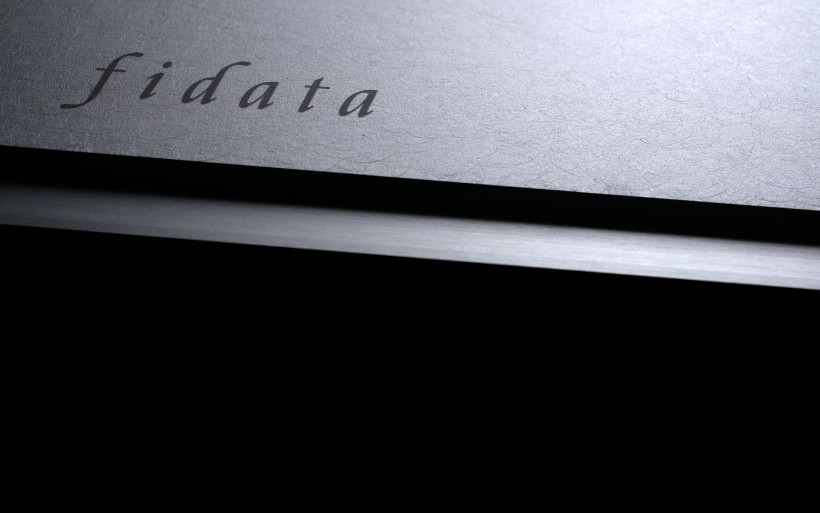 Detailing layer was never the most prominent feature of HFAS1-S10U, though in case of this machine’s bigger brother the impression was different. This aspect alone to me is in fact what differs the two the most. Yes, HFAS1-XS20U displays subpar material in quite favourable light via smoothness injection, grain removal and in general seems to act along the lines of a downpour on a very dry desert. Though the first Fidata deck put density on the pedestal, thus masked more imperfections in the process. Truth told, these confessions are backed by one year old memories, that’s something worth taking into account and having said this, I don’t think that both products are too far off in this regard. But the pricier deck’s more generous informational character was sensible enough to have my full attention in an instant. If I had to frame this camouflage-to-information ratio in numbers, 70:30 fits the Fidata HFAS1-S10U whereas it’s pricier kin would be somewhere in the 50:50 realm. The takeaway is that HFAS1-XS20U didn’t improve one aspect at a cost of another but morphed the already very good outcome into something even better without taking anything in return instead. Maybe that was the bottom of it all? Maybe separately powered SSDs act just like so? I can’t know for sure, but now at least this thesis I can’t exclude.
Detailing layer was never the most prominent feature of HFAS1-S10U, though in case of this machine’s bigger brother the impression was different. This aspect alone to me is in fact what differs the two the most. Yes, HFAS1-XS20U displays subpar material in quite favourable light via smoothness injection, grain removal and in general seems to act along the lines of a downpour on a very dry desert. Though the first Fidata deck put density on the pedestal, thus masked more imperfections in the process. Truth told, these confessions are backed by one year old memories, that’s something worth taking into account and having said this, I don’t think that both products are too far off in this regard. But the pricier deck’s more generous informational character was sensible enough to have my full attention in an instant. If I had to frame this camouflage-to-information ratio in numbers, 70:30 fits the Fidata HFAS1-S10U whereas it’s pricier kin would be somewhere in the 50:50 realm. The takeaway is that HFAS1-XS20U didn’t improve one aspect at a cost of another but morphed the already very good outcome into something even better without taking anything in return instead. Maybe that was the bottom of it all? Maybe separately powered SSDs act just like so? I can’t know for sure, but now at least this thesis I can’t exclude.
 I’m not sure how all changes within my daily rig over the last 12 months influenced this review’s star. Whether my daily tools helped me to understand this product better? And conclude that it’s factually correct to write that it’s better in comparison to its predecessor? Again, I can’t say or know for sure as my firm guess is in large part based on my memory. My laptop has been the very same though, I still remember things quite well and if I had to opt for one Fidata machine now, the HFAS1-XS20U would be my primary choice. Not because of its different voicing though, as on many counts it provided the same quality and overall character as its less costly version, but sprinkled the outcome with extra goodness exclusive to this deck, improved the experience and that’s valuable. Not only this, the latest Fidata platform sang very well with both my 925 and Kinki Audio EX-M1. These two integrated amps are vastly different, which allows me to write now that Fidata HFAS1-XS20U proved to be universal enough to be perfectly capable of getting along with wide range of hardware. Still, happy HFAS1-S10U owners should transition when the storage space runs out. That’s what I’d do.
I’m not sure how all changes within my daily rig over the last 12 months influenced this review’s star. Whether my daily tools helped me to understand this product better? And conclude that it’s factually correct to write that it’s better in comparison to its predecessor? Again, I can’t say or know for sure as my firm guess is in large part based on my memory. My laptop has been the very same though, I still remember things quite well and if I had to opt for one Fidata machine now, the HFAS1-XS20U would be my primary choice. Not because of its different voicing though, as on many counts it provided the same quality and overall character as its less costly version, but sprinkled the outcome with extra goodness exclusive to this deck, improved the experience and that’s valuable. Not only this, the latest Fidata platform sang very well with both my 925 and Kinki Audio EX-M1. These two integrated amps are vastly different, which allows me to write now that Fidata HFAS1-XS20U proved to be universal enough to be perfectly capable of getting along with wide range of hardware. Still, happy HFAS1-S10U owners should transition when the storage space runs out. That’s what I’d do.
Summary
Fidata HFAS1-XS20U turned out to be very similar to its sibling, there’s no question about that. It sounded as organic, well-seasoned, coherent, present and provided joy which will be dearly missed. While writing these words, the product still sings at my place, though this several weeks long trip will end soon and having said this, all I think about now are dire consequences of getting back to my laptop. Will it hurt? You betcha, even more so than one year ago.
Fidata HFAS1-XS20U is the best product in its class I’ve heard and this opinion still stands since late 2017. Though I have to say that SOtM sMS-200ultra along with matched sPS-500 PSU impressed me greatly and it’s a pity that I didn’t have this combo on hand. The two Koreans stacked against the far pricier Fidata deck surely would’ve led to a very entertaining and interesting battle. But the SOtM’s team aside, the HFAS1-XS20U yours truly sees as a platform somewhat different in comparison to its more affordable kin, but also better. Not by much, yet it’s the upper echelon machine nonetheless.
Once audible quality leap and double the storage space are taken into account, the price difference between HFAS1-S10U and HFAS1-XS20U I see as quite reasonable, yet the most interesting bit lies elsewhere. The Japaneese team was able to push their already very good platform’s performance even further via measures as insignificant on the surface as thicker base plate and separate PSUs for its SSDs. The Fidata crew is a bunch of skilled people and one of their products sooner or later will be mine, though that’s something I’ve been already aware since late 2017. ‘Till next time.
Associated equipment:
- Amplifiers: Trilogy 925, Kinki Audio EX-M1
- Sources: LampizatOr Pacific (KR Audio T-100 + KR Audio 5U4G Ltd. Ed.)
- Speakers: Boenicke Audio W8
- Transports: Asus UX305LA
- USB components: Fidata HFU2
- Network components: Fidata HFLC
- Speaker cables: Forza AudioWorks Noir Concept, Audiomica Laboratory Celes Excellence, Luna Gris
- Interconnects: Forza AudioWorks Noir, Audiomica Laboratory Erys Excellence
- Power supply: Gigawatt PF-2 + Gigawatt LC-2 MK2 + Forza AudioWorks Noir Concept/Audiomica Laboratory Ness Excellence
- Stolik: Franc Audio Accesories Wood Block Rack
- Music: NativeDSD
Retail prices of reviewed components in EU (excl. tax):
- Fidata HFAS1-XS20U: €8’900
- Fidata HFAS1-S10U: €7’700
Dostawca: Fidata


